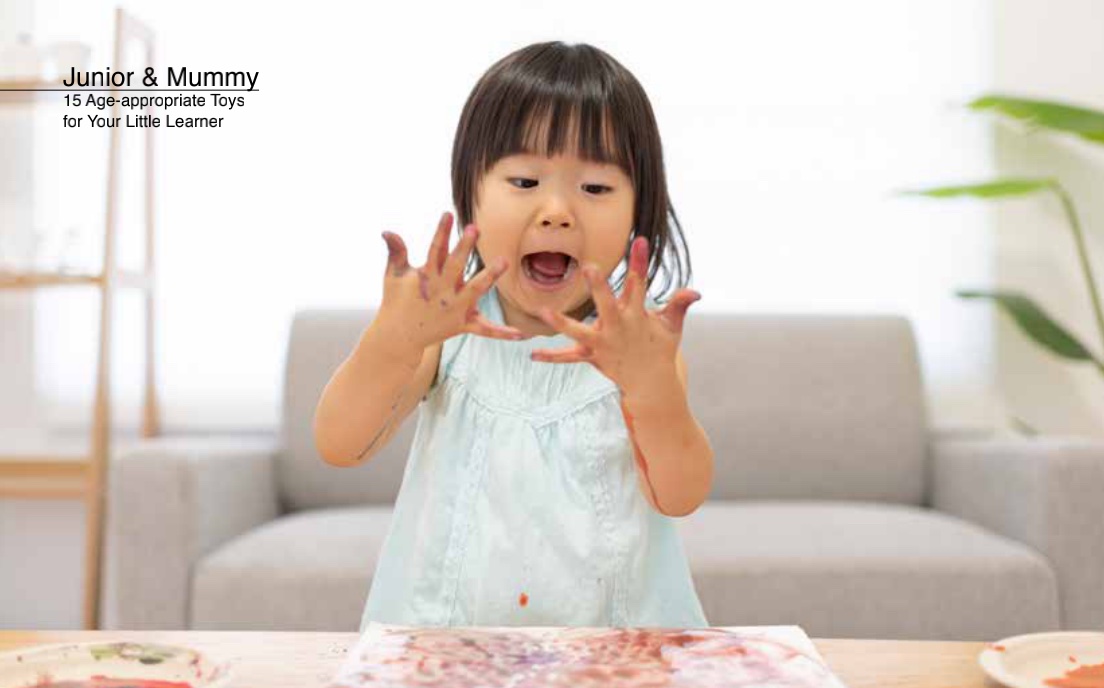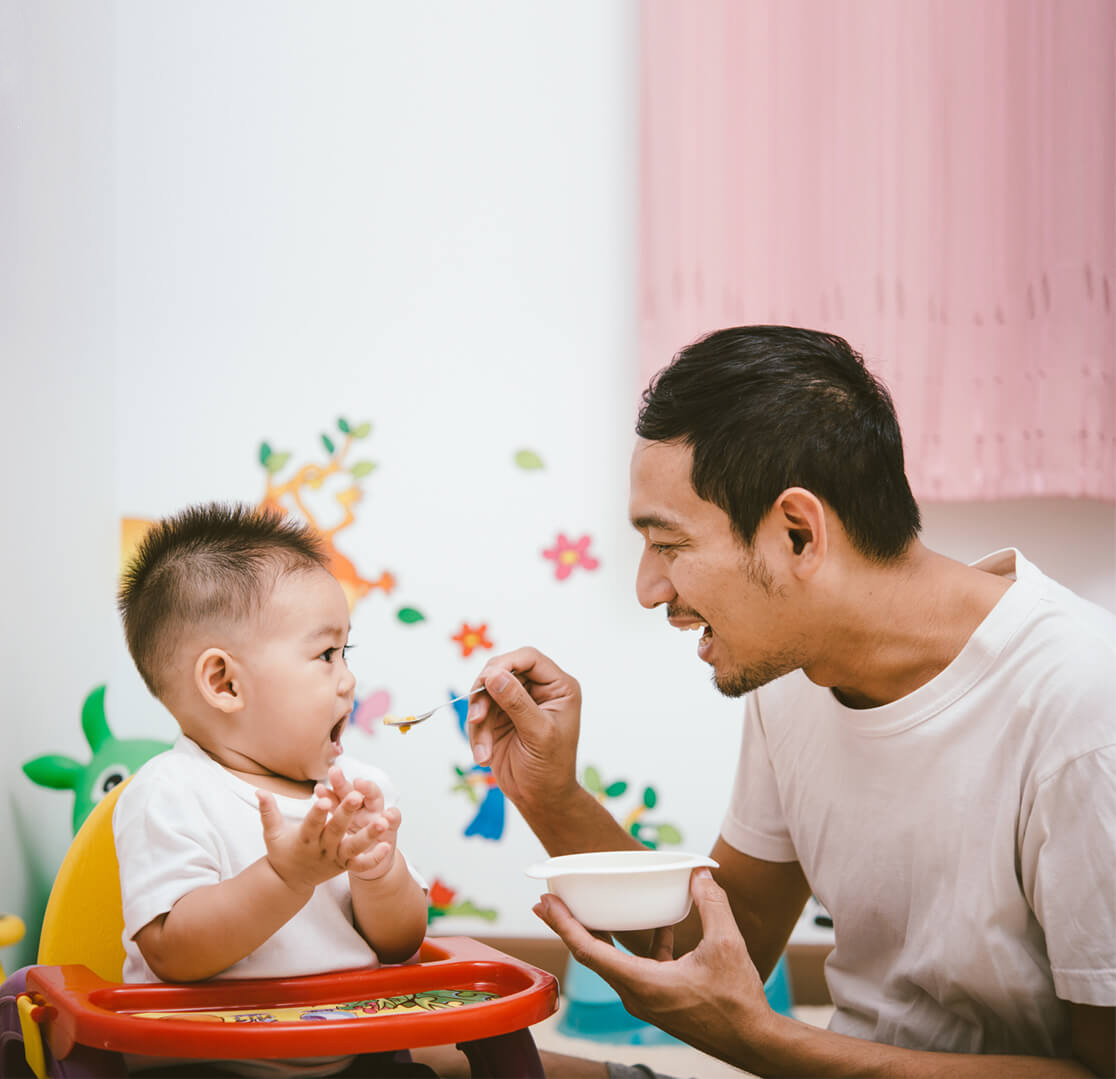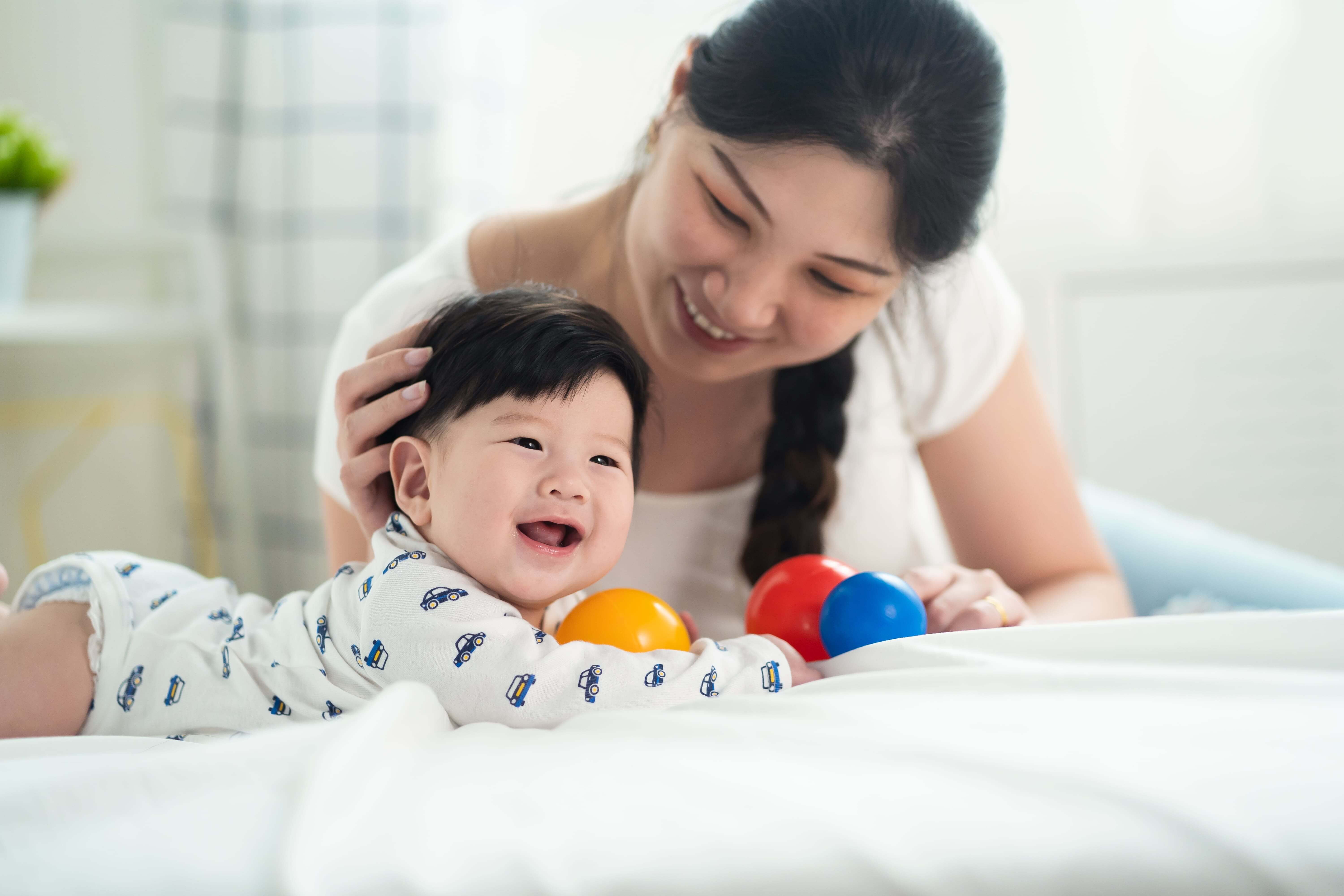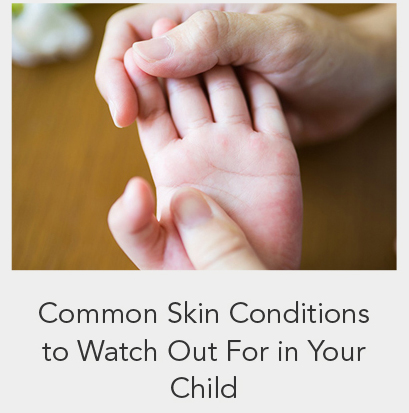15 Age-appropriate Toys for Your Little Learner

For children between the ages of one and five, play is one of the ways they learn many crucial life skills, pick up information about the world around them, and begin to learn basic academic skills in preparation for school.
BASIC IS BETTER
According to early childhood education expert Professor Jeffrey Trawick-Smith, basic toys are better than complex ones because they are ‘open-ended’, meaning that they encourage children to use them in creative ways. Besides developing creativity, research indicates that play also encourages other important skills, like language and fine and gross motor skills.All the toys on this list provide a great balance of play behaviours across all areas of crucial development: creative, intellectual and social.
FOR TODDLERS
1. Finger Paint
Finger painting helps aid your tot’s fine motor development while strengthening their finger and hand muscles, thereby developing pre-writing skills. It also introduces your child to colours, and stimulates their imagination and creativity.
Pro tip: Dress your child in a waterproof apron, spread a plastic mat on the floor and let them make a mess!
2. Shape Sorter
The shape sorter allows toddlers to test their fledgling problem-solving skills, teaches them about object permanence, and helps improve their fine motor skills.
Pro tip: Sit with your toddler and introduce the names of shapes and colours
3. Stacking Cups
Learning how to stack, nest, or snap cups together introduces toddlers to numbers, sizes and shapes, and teaches them about spatial eye-hand coordination and spatial awareness.
Pro tip: Unlock even more learning fun with water. Play stacking cups in the bath, teaching concepts like volume and the behaviour of liquids.
4. Mirrors
A simple mirror can aid your toddler’s cognitive development, and develop self-awareness. Hold the mirror in front of your child, and encourage them to say ‘Hi!’. Then, take the mirror away and ask, ‘Oh no, where did you go?’. Then bring the mirror back. You are teaching your little one about object permanence.
Pro tip: Teach your child about emotions – ask them to make a happy face, a sad face, and so on.
5. Sandbox
Sand play gives your little one sensory experience through the texture of sand and encourages the use of the senses to boost cognitive learning. In group play situations, it also helps your child to develop social skills like problem solving, sharing, and communicating.
Pro tip: Let your child experience and learn how to play independently, but observe and supervise from a short distance.
6.Pegs and Pegboards
Pegboards help build hand-eye coordination, enhance fine motor skills, encourage colour recognition, and develop early math skills. They also encourage creativity as children sort and match the different coloured pegs to form their own designs.
Pro tip: Start with bigger pegs and advance to smaller pegs.
7. Bath Toys
Bath toys teach tots about cause and effect and object permanence. By dropping the toys into the water and picking them up again or squeezing them to produce sounds, children learn that their actions lead to a response
Pro tip: Introduce your little one early to scientific concepts like density and buoyancy by providing toys that both float and sink.
8. Stuffed Animals
When toddlers talk to, cuddle and take care of their stuffed toys, they are practising language skills and social skills. Through forming ‘friendships’ with their stuffed toys, they learn to be more empathetic and form relationships more easily in the future.
Pro tip: Show children how to lift their stuffed toys’ arms andlegs using gentle movements. This helps teach them to be respectful and caring towards others.
9. Balls
Ball play improves your child’s motor skills, hand-eye coordination, and reflexes, while working their arm and leg muscles. In addition, ball play with other kids aids your child in developing social skills like sharing, following rules, and negotiating.
Pro tip: A ‘wiffle ball’, or any ball with an irregular texture, will help your child get a good grip.
FOR PRESCHOOLERS
10. Puzzles
Puzzles boost a child’s cognitive and memory capabilities, as well as their visual spatial awareness. They also hone their logical thinking and problem solving skills.
Pro tip: Find puzzles that appeal to your child’s interests, such as animals, trains or rockets!
11. Toy Train Sets
Assembling the tracks in the correct order helps enhance your child’s logical thinking skills and develops their fine motor skills. Composing and creating the landscape around the tracks further encourages creativity.
Pro tip: Introduce other toys. For example, place toy dinosaurs around the track to excite their imagination!
12. Dress-up Costumes
Unleash your child’s creativity as they take on the role of a favourite character through dressing up. Role-playing builds language and literacy skills as a child interacts with others.
Pro tip: Look for ‘props’ your child can use as they develop their stories.
13. Easel
Painting builds self-confidence and encourages decision-making as your little one selects their subject matter, plans their composition and chooses their colours. It also helps to develop motor skills.
Pro tip: Never say ‘I can’t draw’ in front of your child.
14. Picture Books
Reading aloud with a parent encourages verbal interaction and helps to develop a child’s confidence, especially before ‘reading aloud’ lessons at school. Verbal dexterity complements literacy.
Pro tip: Allow your child to turn the pages on their own.
15. Toy Food and Play Kitchen
‘Play cooking’ develops your child’s fine motor skills as they ‘chop’ and ‘stir’, while teaching them about household chores and the importance of a balanced diet and healthy food.
Pro tip: Point out the main nutritional benefit of each food in real life – for example, milk makes your bones strong because it contains something called ‘calcium’.
Article courtesy of Wyeth.
This article is taken from our My Alvernia Magazine Issue #45. Click here to read the issue on our website.



